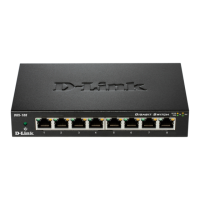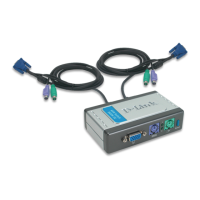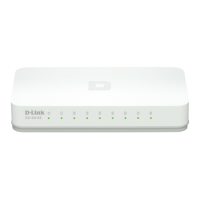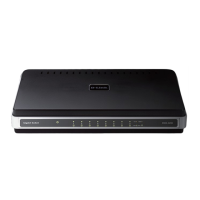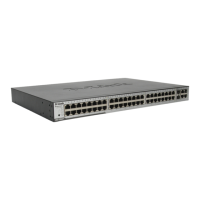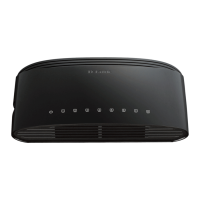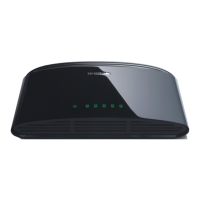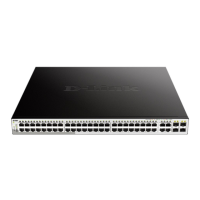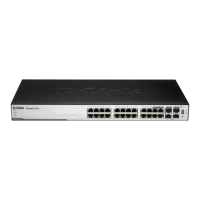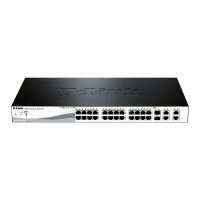Do you have a question about the D-Link Nuclias DNH-100 and is the answer not in the manual?
Details the DNH-100 Nuclias Connect Hub and its capabilities.
Lists all items included in the Nuclias Connect Hub package.
Specifies hardware and software requirements for management computers.
Explains the status and meaning of the LEDs on the device.
Describes the physical ports and their functions on the device.
Instructions for physically installing the Nuclias Connect Hub in a rack.
Steps to connect the Nuclias Connect Hub to the network and power.
Initial steps to access and start the Nuclias Connect software interface.
Configuring essential system parameters during initial setup.
Defining network names and IDs within the setup wizard.
Provides an overview of access point activity and clients.
Displays switch usage, PoE status, and traffic information.
View data usage and summary statistics for access points.
Detailed information on all connected wireless clients.
View and manage clients that have been blocked.
Configure settings to detect and view neighboring access points.
Overview of managed switch devices, their status, and key information.
View core information and basic settings for a specific switch.
View status, traffic, and information for individual switch ports.
Configure and manage IPv4 interfaces for VLANs on the device.
Define static routes for IPv4 traffic forwarding.
Monitor switch power usage and Power over Ethernet status.
Utilize tools like Ping and Cable Test for network diagnostics.
Displays a list of active client devices connected to the switch.
Detailed view of port configuration, link status, and traffic.
View network topology and understand device interconnections.
Upload floor plan images and map device locations.
Function to create new sites and networks for device management.
Configure advanced wireless settings for access points.
Define SSID, broadcast, and security protocols for wireless networks.
Configure VLANs, port assignments, and IP interfaces.
Manage and allocate bandwidth for optimal network performance.
Adjust RF settings to improve wireless signal and reduce interference.
Set schedules to control the availability of SSIDs.
Configure device login, NTP, and time zone settings.
Optimize performance parameters for 2.4GHz and 5GHz wireless bands.
Configure STP to prevent network loops on multi-port LANs.
Isolate wireless clients to prevent inter-client communication.
Manage client association, RSSI thresholds, and connection limits.
Boost network performance by prioritizing faster devices.
Guide dual-band clients to less congested wireless bands.
Detect rogue APs and gather information for WLAN planning.
Set up remote RADIUS servers for centralized network authentication.
Define time profiles to control switch access schedules.
Configure VLANs and Voice VLAN settings for switch management.
Manage multicast traffic and Spanning Tree Protocol.
Prioritize network traffic and detect port loopbacks.
Implement firewall rules to permit or deny specific network traffic.
Configure authentication policies, including 802.1X and MAC authentication.
Configure individual switch port settings, link types, and VLANs.
Configure SNTP for automatic network time synchronization.
Procedures for updating the device firmware online or manually.
Install SSL certificates to establish secure network communication.
Configure payment gateway settings for e-commerce services.
Analyze peak wireless network activity based on clients and traffic.
Monitor wireless traffic and client usage reported by the hour.
Track daily wireless traffic and client usage patterns.
View reports to identify the most active access points.
Monitor switch traffic and PoE usage on an hourly basis.
Track daily switch traffic and PoE usage.
View ranked reports for switch traffic, errors, and utilization.
View alert messages and system log entries from devices.
Monitor system alerts and necessary actions for smooth operation.
View log messages from an access point's embedded memory.
Records user activities such as profile and network creation or deletion.
Configure types of events that trigger alerts and notifications.
View and manage all devices on the network, both managed and unmanaged.
View user status, edit profiles, and manage user accounts.
Control user access by authorizing or unauthorizing them on a network.
Customize general device settings like name, logo, and time.
Configure device access addresses, ports, and SSL certificates.
Configure SMTP settings for sending email notifications and alerts.
Perform backup and restore operations for device configuration and logs.
Procedures for updating the device firmware via local or FTP sources.
Perform device operations like shutdown, reboot, factory reset, and MicroSD format.
Enable REST API for communication with third-party applications.
Steps to create a Nuclias account for cloud and portal access.
Configure single sign-on parameters to access the Nuclias Connect portal.
Access and manage Nuclias Connect hubs through the web portal.
Set up alerts for specific event types and email notifications.
Enable and configure automatic checks for firmware updates.
Browse online resources for setup, guidelines, and troubleshooting tips.
View system information about the DNH-100 and its supported models.
Export network profiles from Nuclias server for managing APs.
Use the app to discover, configure, and deploy access points.
Details the DNH-100 Nuclias Connect Hub and its capabilities.
Lists all items included in the Nuclias Connect Hub package.
Specifies hardware and software requirements for management computers.
Explains the status and meaning of the LEDs on the device.
Describes the physical ports and their functions on the device.
Instructions for physically installing the Nuclias Connect Hub in a rack.
Steps to connect the Nuclias Connect Hub to the network and power.
Initial steps to access and start the Nuclias Connect software interface.
Configuring essential system parameters during initial setup.
Defining network names and IDs within the setup wizard.
Provides an overview of access point activity and clients.
Displays switch usage, PoE status, and traffic information.
View data usage and summary statistics for access points.
Detailed information on all connected wireless clients.
View and manage clients that have been blocked.
Configure settings to detect and view neighboring access points.
Overview of managed switch devices, their status, and key information.
View core information and basic settings for a specific switch.
View status, traffic, and information for individual switch ports.
Configure and manage IPv4 interfaces for VLANs on the device.
Define static routes for IPv4 traffic forwarding.
Monitor switch power usage and Power over Ethernet status.
Utilize tools like Ping and Cable Test for network diagnostics.
Displays a list of active client devices connected to the switch.
Detailed view of port configuration, link status, and traffic.
View network topology and understand device interconnections.
Upload floor plan images and map device locations.
Function to create new sites and networks for device management.
Configure advanced wireless settings for access points.
Define SSID, broadcast, and security protocols for wireless networks.
Configure VLANs, port assignments, and IP interfaces.
Manage and allocate bandwidth for optimal network performance.
Adjust RF settings to improve wireless signal and reduce interference.
Set schedules to control the availability of SSIDs.
Configure device login, NTP, and time zone settings.
Optimize performance parameters for 2.4GHz and 5GHz wireless bands.
Configure STP to prevent network loops on multi-port LANs.
Isolate wireless clients to prevent inter-client communication.
Manage client association, RSSI thresholds, and connection limits.
Boost network performance by prioritizing faster devices.
Guide dual-band clients to less congested wireless bands.
Detect rogue APs and gather information for WLAN planning.
Set up remote RADIUS servers for centralized network authentication.
Define time profiles to control switch access schedules.
Configure VLANs and Voice VLAN settings for switch management.
Manage multicast traffic and Spanning Tree Protocol.
Prioritize network traffic and detect port loopbacks.
Implement firewall rules to permit or deny specific network traffic.
Configure authentication policies, including 802.1X and MAC authentication.
Configure individual switch port settings, link types, and VLANs.
Configure SNTP for automatic network time synchronization.
Procedures for updating the device firmware online or manually.
Install SSL certificates to establish secure network communication.
Configure payment gateway settings for e-commerce services.
Analyze peak wireless network activity based on clients and traffic.
Monitor wireless traffic and client usage reported by the hour.
Track daily wireless traffic and client usage patterns.
View reports to identify the most active access points.
Monitor switch traffic and PoE usage on an hourly basis.
Track daily switch traffic and PoE usage.
View ranked reports for switch traffic, errors, and utilization.
View alert messages and system log entries from devices.
Monitor system alerts and necessary actions for smooth operation.
View log messages from an access point's embedded memory.
Records user activities such as profile and network creation or deletion.
Configure types of events that trigger alerts and notifications.
View and manage all devices on the network, both managed and unmanaged.
View user status, edit profiles, and manage user accounts.
Control user access by authorizing or unauthorizing them on a network.
Customize general device settings like name, logo, and time.
Configure device access addresses, ports, and SSL certificates.
Configure SMTP settings for sending email notifications and alerts.
Perform backup and restore operations for device configuration and logs.
Procedures for updating the device firmware via local or FTP sources.
Perform device operations like shutdown, reboot, factory reset, and MicroSD format.
Enable REST API for communication with third-party applications.
Steps to create a Nuclias account for cloud and portal access.
Configure single sign-on parameters to access the Nuclias Connect portal.
Access and manage Nuclias Connect hubs through the web portal.
Set up alerts for specific event types and email notifications.
Enable and configure automatic checks for firmware updates.
Browse online resources for setup, guidelines, and troubleshooting tips.
View system information about the DNH-100 and its supported models.
Export network profiles from Nuclias server for managing APs.
Use the app to discover, configure, and deploy access points.

